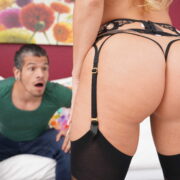Erotic Literature: Arousing the Imagination
Erotic literature has been around for centuries, serving as a provocative and imaginative outlet for readers and writers alike. From the ancient Greek texts of Sappho to the more modern works of Anais Nin and Henry Miller, erotic stories have captivated audiences and pushed the boundaries of what is considered acceptable in literature.
At its core, erotic literature is a form of storytelling that focuses on the exploration of human desire and sexuality. It often includes explicit descriptions of sexual acts, but its true power lies in its ability to evoke emotion, ignite the imagination, and delve into the complexities of human relationships.
One of the key elements that sets erotic literature apart from other forms of adult content, such as pornography, is its focus on story and character development. While pornography often prioritizes visual stimulation and immediate gratification, erotic literature takes a more nuanced approach. It invites readers to immerse themselves in a world of sensuality, where they can explore their own desires and fantasies through the experiences of the characters.
Erotic stories also offer a level of anonymity and accessibility that other forms of adult content may not provide. For some readers, the ability clean-up solutions for adult studios to explore their fantasies through the written word can be less intimidating than engaging with visual content. Additionally, the availability of erotic literature in digital formats has made it easier than ever for readers to access these stories discreetly and at their own pace.
However, it’s important to note that not all erotic literature is created equal. Like any genre, the quality of writing and depth of character development can vary widely. Some stories may prioritize shock value over substance, while others may lack emotional resonance or fail to explore the complexities of human desire.
When it comes to writing erotic literature, there are a few key elements to keep in mind. First and foremost, it’s important to focus on story and character development. Creating well-rounded, relatable characters that readers can connect with on an emotional level will make the erotic scenes more impactful and memorable.
Additionally, it’s important to consider the context in which the erotic scenes take place. Setting the scene and building tension can help to create a more immersive experience for the reader. Describing the emotions and sensations of the characters can also help to create a deeper sense of intimacy and connection.
Finally, it’s important to remember that erotic literature is not one-size-fits-all. Different readers will have different preferences and turn-ons, so it’s important to consider the audience and tailor the story accordingly.
In conclusion, erotic literature offers a unique and imaginative outlet for exploring human desire and sexuality. By focusing on story and character development, building tension and atmosphere, and considering the audience, writers can create memorable and impactful erotic stories that captivate readers and ignite their imaginations.









